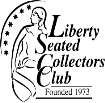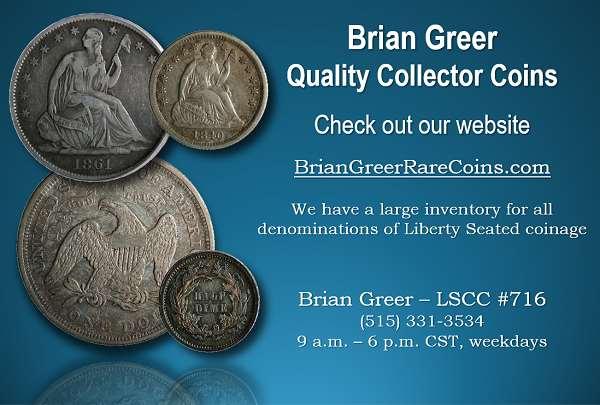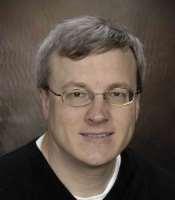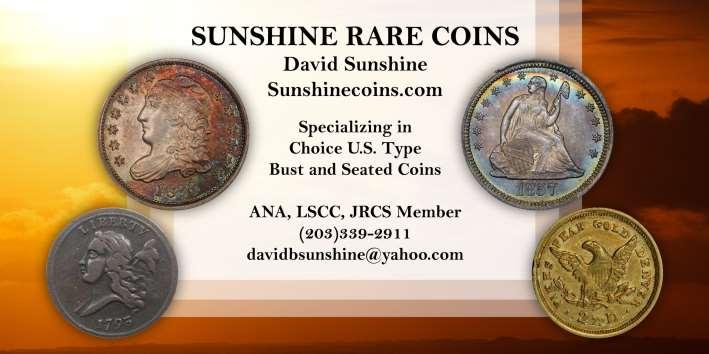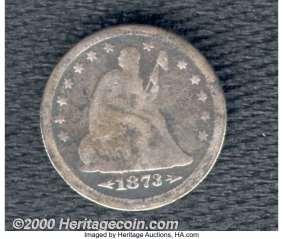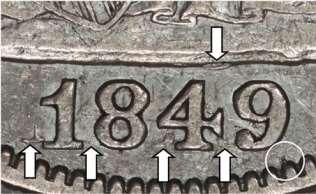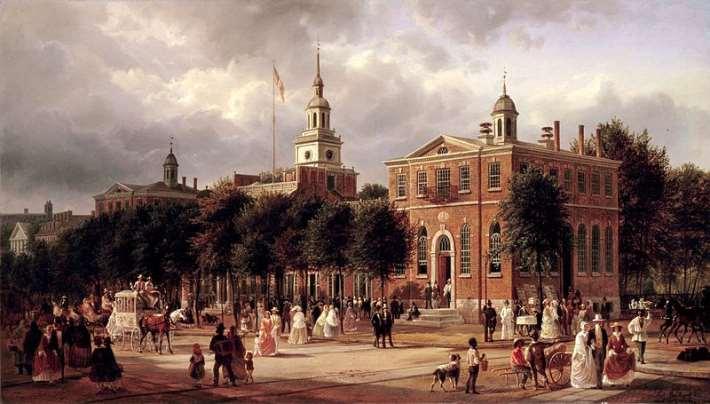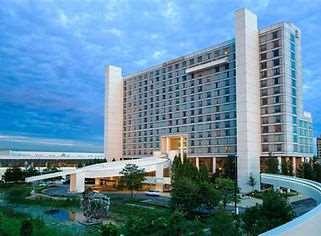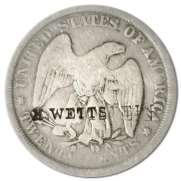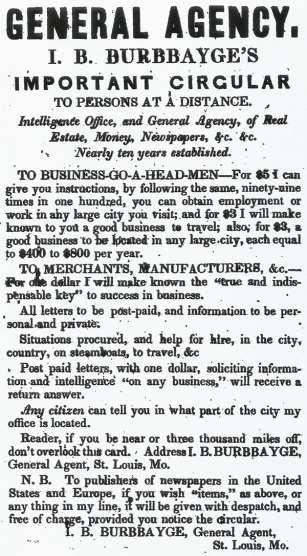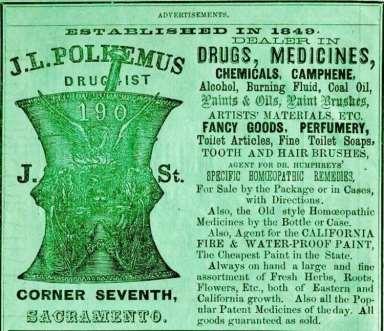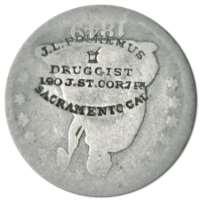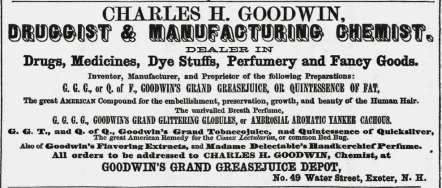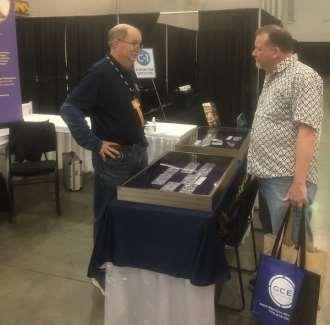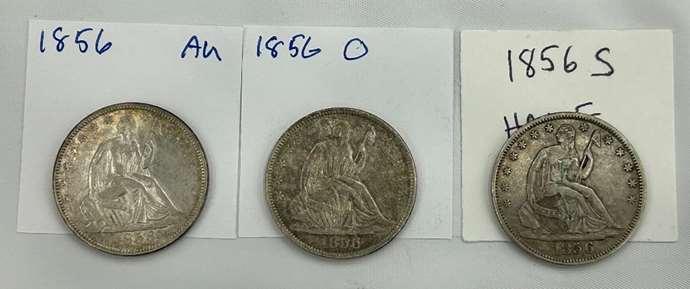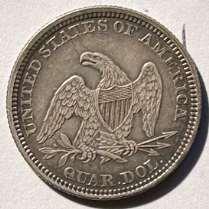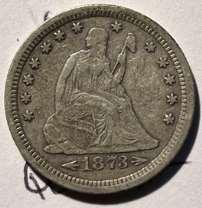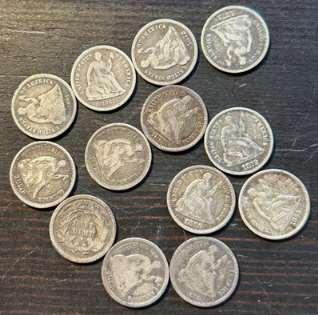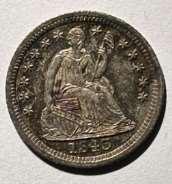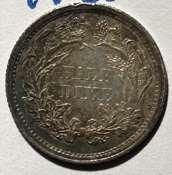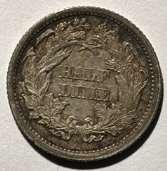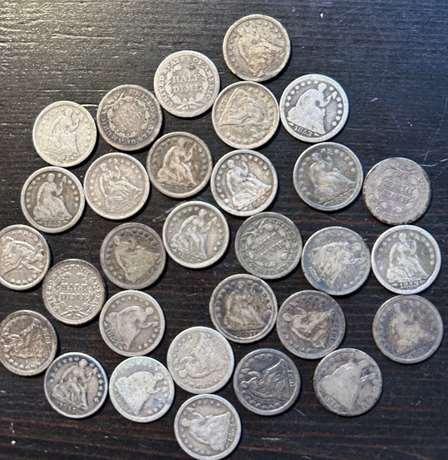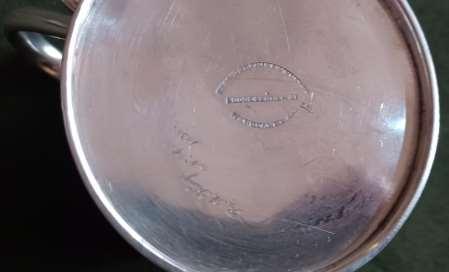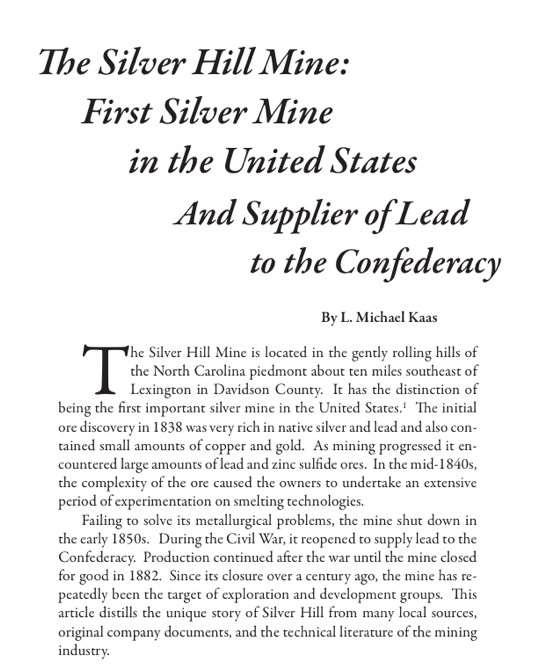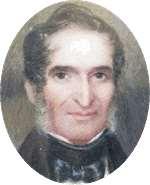-The Farmer Brown HoardLiberty Seated Coinage Finds
by Verne Pitman, LSCC #2467
Introduction
Being known as the “coin guy” in my immediate and extended family has certain upsides as evidenced by the occasional call or text message that begins as, “Hey Verne, you know about coins, right?” The treasure hunt typically begins after receiving such a message. This was the case late in 2022 when my wife’s Aunt A (we’ll just use initials henceforth for the sake of anonymity) asked the “Hey Verne…” coin question as her son, Cousin K, inherited a large collection of coins (hoard actually) originally assembled by his Great Grandfather who we’ll refer to as Farmer Brown from Rhode Island.
The Story of Farmer Brown
Farmer Brown is remembered as an old-time farmer of limited means who in his later years lived with his wife in an extremely modest fashion. The old farmer had passed away in the early 1980’s. My wife recalls stories of a farmhouse in great disrepair with various little rodent creatures running around and drafty winds blowing through patched up windows. Little else is remembered about Farmer Brown and his wife as decades have passed and those who knew them well are long gone. After his passing, one of the surprising items in the farmer’s “estate” was his big chest of coins which was bequeathed to his daughter and subsequently passed on to his grandson and granddaughter, Uncle G and Aunt S. As required for settlement of the estate, the box of coins was appraised by a local dealer in January 1986 and assigned a value of $9652. Uncle G took possession of the chest as Aunt S had no interest in the collection. It turns out that Uncle G similarly had little interest in the collection as after transferring the coins from the wooden crate in which they were originally contained into 2 big plastic bins, the coins subsequently sat in the basement unloved for nearly the next 4 decades. It was then sometime in 2022 when Uncle G gave the bins of coins to his son Cousin K.
Contents of the Hoard and Meetings with Cousin K
Before consulting with me, Cousin K showed a few coins to a local RI dealer who was reportedly impressed by what he saw. The local dealer basically told Cousin K that the collection was too much for him to handle and that he should seek some serious help in organizing and handling the collection. After that local consultation, Cousin K began studying and learning a bit about coins and soon began to realize that he was in possession of a potentially very valuable collection. After being referred to me by Aunt A, he gave me a call to chat about what he found thus far sorting through the collection. During our initial call, Cousin K mentioned that he had a 1916 quarter and an 1893 Morgan dollar. Being a bit skeptical I asked him to text me a couple of pictures. He quickly obliged and sent me pictures of a VF or so 1916 Standing Liberty quarter and an 1893- S Morgan.
(Continued
Then followed pictures of a 1794 Flowing Hair half dollar and a relatively high grade 1806 Draped Bust quarter! After catching my breath and asking what else he had, we decided that we had better meet up so that I could get a good look at everything.
Our first meeting in early 2023 lasted about 6 hours or so, where I was presented with literally hundreds if not thousands of coins, the most modern of which was a Franklin half from the late 1940’s. Represented in the hoard was nearly every series of U.S. coins ranging from well-worn copper colonials to silver dated as far back as 1794. I poured through small cardboard boxes filled with half cents, large cents, two-cent pieces, bust coins of every denomination, early to mid-20th century coins and of particular interest to this article, a good number of Liberty Seated half dimes, dimes, quarters, half dollars and even a few Seated and Trade dollars. Also present was a large bag of Spanish or Spanish Colonial 8 Reales and other foreign pieces which were saved for another day. That bag is still on our “get around to it” list as presently we continue to focus on the U.S. coins.
Interestingly, Farmer Brown had placed certain series into circa 1940 blue Whitman folders which were somewhat flimsy and moldy after decades in the basement. This provided some evidence that Farmer Brown was actually collecting as opposed to simply tossing coins into bins. Just as a teaser, imagine the look in my eyes when I saw the 2 folders comprising a 100 % complete set of Barber Quarters, AG and better, and a nearly complete set of Standing Liberty quarters (no 18/17 overdate) in fine or better condition.
It was obvious to Cousin K and I that many of these coins were likely circulation finds dating back to the early/mid 1900’s rather than purchases, especially given Farmer Brown’s meager means. We also speculated that some of the earlier coins (e.g., the old coppers and the bust and seated coins), may have been passed down to Farmer Brown by ancestors further back in family history as it was unlikely that these coins were still floating around in circulation in the early 1900’s.
We proceeded to begin sorting what we found by placing selected better coins into flips and organizing further into series by date and mint mark, while also paying close attention to potential value. Some of the better coins were assembled into a “good stuff” binder, including some interesting Liberty Seated coins. During this first meeting, we also discussed the benefits of certification for some of the better coins that now resided in the so-called “good stuff” binder. This article will present selected findings from the Liberty Seated series.
Overview of Farmer Brown’s Liberty Seated Coins
Liberty Seated Dollars and Trade Dollars
A handful of Liberty Seated Dollars and Trade Dollars were amongst the hoard; however, they were neither scarce dates and/or mintmarks nor conditionally special. One coin was deemed worthy of this summary; that one being an 1860-O Seated Dollar that I graded about XF 40. That single coin is pictured to the left on the next page. (Continued
(Continued from previous page)
Liberty Seated Half Dollars
As we processed through the hoard, the following better date and/or better grade Seated Halves were found: 1846 Tall Date, 1846-O Medium Date, 1854-O, 1855-O, 1856-P, O and S, 1886, 1887, 1888 and 1889. Although several of these coins displayed evidence of ancient cleaning, in my estimate this group of Seated halves ranged in grade from varying levels of VF to AU. Interestingly, the halves from the 1880’s were well circulated rather than the more typically encountered AU and Uncirculated.
A good deal more, 36 in all, common date/mintmark and well circulated Seated halves were present, and will make a good start at populating a Dansco Liberty Seated half dollar album. Space precludes providing pictures of the full complement of Seated halves, but below are some pictures of the more notable coins.
An 1860-O Liberty Seated Dollar in raw EF-40
1846 Tall Date and 1846-O Medium Date
(Continued from previous page)
#242 - March 2025
(Continued on next page)
1854-O and 1855-O
1856-P, 1856-O and 1856-S
(Continued from previous page)
Liberty Seated Quarters
A similarly interesting group of Liberty Seated quarters was also uncovered. In all, 16 L.S. quarters with varying degrees of circulation wear were found. Shown below and on next page are several of the more notable coins including:
A nice AU 1861 Seated Quarter and an 1878-CC (below)
1873 S w/ Arrows
(Continued
1887, 1888 and 1889
(Continued from previous page)
24
A Quartet of Seated Quarters from the 1880’s
#242 - March 2025
Liberty Seated Dimes (Description on next page)
Find the 1865-S Dime? More Seated Dimes
(Continued on next page)
(Continued
Liberty Seated Dimes cont.
When reviewing the Liberty Seated dimes in the hoard, it was readily apparent that these were all pulled from circulation many years ago as there were very few that could even achieve an XF grade. Various dates and mintmarks were found, including an 1865-S. I don’t have an individual picture of the ’65 S, since I only noticed it by looking at a group picture of the dimes after Cousin K and I met. Look at the first group shot on previous page and see if you can find the 1865-S among the dozen or so coins in the shot? A second group picture of additional Seated dimes is included for good measure. As you can see there’s a good deal of work ahead of us to attribute the Seated dimes more thoroughly as we haven’t gotten to that task yet.
Liberty Seated Half Dimes
A rather large group of Liberty Seated half dimes was found amongst the hoard. In this group a few stood out owing to their higher grades. These better grade Seated half dime examples include an 1843, 1860, 1862 and 1868-S.
1843 and 1860 Half Dimes
1862 and 1868-S Half Dimes
(Continued from previous page)
#242 - March 2025
Many more Seated half dimes were found as evidenced in the group pictures below. Once again, it’s apparent that much attribution work lies ahead.
(Continued on next page)
A trio of early date Liberty Seated Half Dimes
(Continued from previous page)
Current and Future Plans for the “Farmer Brown” Liberty Seated Coins including a Selection of Coins for Certification
Cousin K and I discussed the option of having some of the coins from the aforementioned “good stuff” binder certified. We met again in the Fall of 2024 with the intention of selecting which coins were worthy of certification and grading. As I’m a member of NGC we decided to submit to that service. It quickly became apparent that we would need to accomplish this endeavor in chunks as there were a great many coins that would benefit from certification while expenses needed to also be considered.
We assembled 2 initial groups for submission: one being a group of 4 high value coins for the express tier and another group of 14 for the standard tier. All were brought to the Baltimore Whitman Show in November 2024 and handed off to NGC. Among the express tier was a 1794 half dollar, the 1916 SLQ, the 1893-S Morgan, and a 1901-S Barber quarter, but I’ll save further details of those 4 coins for another day in other journal articles.
Several coins of interest in this article were submitted to the standard tier while in Baltimore. The submission included the following Seated halves: 1846 Tall Date and 1846-O Medium Date, 1856- P, O and S and 1887, 1888, and 1889. Also included for submission was the 1860-O Seated dollar. As mentioned, a good deal more Seated Halves and a few other Seated Dollars were present, but were either deemed more appropriate for a future economy tier submission or not suitable for certification.
As this article is being written, a second standard tier submission as well as an economy submission is being prepared. Liberty Seated coins in these pending submissions include a few more Seated halves, and many of the Seated quarters, dimes and half dimes pictured above.
Certification Results for the Seated Halves and Dollar
First to come back to us were the 4 coins submitted via the Express Tier. As mentioned, these results will be summarized elsewhere.
Certification results for the Seated coins to the Standard Tier submission were available in mid-December. The results were within expectations with 5 halves achieving “straight” grades and 3 others assigned “details” grades as follows: 1846 Tall Date XF details-cleaned, 1846-O Medium Date XF details-cleaned, 1856-P AU 55, 1856-O AU 58, 1856-S XF details-cleaned, 1887 VF 20, 1888 VF 20, and 1889 F 15. The 1860 O Seated Dollar graded XF 45.
Status of the Farmer Brown Hoard – February 2025
It’s now almost 2 years since Cousin K and I first got together and we’re still sorting through the hoard! We continue to organize the collection and come up with plans to certify additional coins (Continued
(Continued
that would benefit from professional grading. These future submissions will include 2 lower grade, yet attributable Flowing Hair half cents from the 1790’s, and a few dozen Draped Bust and Capped Bust half dimes, dimes, quarters and halves. Yes, there are 2 Bust Dollars as well although they are rather beat up and not high in the certification queue. I think we’ve found all the interesting Seated coinage, but who knows, as there is still a bit more digging to do, and a lot of attributions to make. Cousin K continues to study and acquire coin knowledge and can now be considered a new and enthusiastic coin collector. In addition to this Liberty Seated coinage summary, I’m also preparing a few more articles specific to other coins found in Farmer Brown’s treasure chest. Keep an eye out for related articles in the Seated Half Society Newsletter, the Journal of the Barber Coin Collector’s Society (BCCS), NENA News and perhaps elsewhere as there is lots to share from this long neglected magnificent treasure.

Call for LSCC Hall of Fame Nominations for 2025 (Due by April 15)
Nominations are being accepted for the LSCC Hall of Fame. A Nomination Form must be received by April 15. For information about the Hall of Fame, requirements for nomination, and access to the Nomination Form, please visit the LSCC website, https://lsccweb.org/LSCC/Hall-of-Fame.
Questions or concerns regarding the LSCC Hall of Fame may be directed to Craig Eberhart, LSCC Vice President. Contact information is on the last page of this issue or send to:
Craig Eberhart at craig@eberhart.us or P.O. Box 1386, Los Alamos, NM 87544
Nominator ___________________________
Nominee ___________________________
LSCC Member Yes / No
Provide any of the following information to assist with the selection:
1. Time as LSCC Club Officer or Leader / Position
2. Collections Built, including grade and as many specifics as possible
3. Published Writings (Liberty Seated Books, Articles, etc.)
4. Club Contributions (promoting or assisting the LSCC in its mission)
5. Numismatic or LSCC Awards
6. Miscellaneous Data that might add to Nominee’s consideration & Nominators Comments
A Rare 1838 (NC) Engraved Sterling Silver Cup produced from silver ore out of the “First Silver Mine in America” that also shipped silver ore to the U.S. Mint in Philadelphia
by Sam Perry, Johnny Johnson and Paul Kluth (with technical expertise provided by author L. Michael Kass)
Sam Perry, is a local collector in Carroll County, MD and Gettysburg, PA in the area of historical artifacts including the Civil War period. Recently, we bumped into each other at a local Heritage & History Museum and he shared a recent auction acquisition with me.
Pictured is a rare find, an engraved sterling silver cup with the inscription that reads: "PresentedtoRoswellKingHegeonhisbirthdaybyhisgrandfather.Thiscupmadefrom thefirstsilverobtainedintheUnitedStates."
The bottom is engraved: "R A King 1838 NC". The maker is “Ball, Tompkins and Black. Successors to Marquand and Co.” Roswell Allen King started the Silver Hill Mine in NC. A lot comes up on the internet and apparently this first silver mine in America provided tons of silver to the Philadelphia Mint for the striking of U.S. coins, probably Liberty Seated too.
Johnny Johnson, another good collecting friend who is an expert on mining in the U.S. sent me a comprehensive journal article on the Silver Hill Mine. “A good friend of his, Michael Kass (retired U.S. Bureau of Mines) wrote this article (shown on the following pages) in the Mining History Journal back in 2009 on the history of Silver Hill.”
(Continued from previous page)
Inscription reads "Presented to Roswell King Hege on his birthday by his grandfather. This cup made from the first silver obtained in the United States."
(Continued on next page)
(Continued from previous page)
Inscription reads "R A King 1838 NC". Maker is “Ball, Tompkins and Black. Successors to Marquand and Co.”
(Continued from previous page)
Published in the 2009 Mining History Journal
L. Michael Kaas is a retired mining engineer with a career in government and the private sector. He received a BS degree at Pennsylvania State University and an MS degree at the University of Minnesota. His research interests include the historic mining areas in the eastern states.
MHJ-v16-2009-Kaas
(Continued from previous page)
While this is a highly technical journal article about mining in the early U.S., E-Gobrecht readers should still find the information quite interesting especially since it gets to the fundamentals of an industry as to how silver was first produced in this country for the production of U.S. coins and other silver objects of function and beauty. [See link on previous page.]
Excerpts from the article indicate “Silver Hill was a high-grade orebody. Early analyses of selected samples of various ore types from the richest parts of the veins showed metal contents as high as 12 percent silver, 62 percent lead, 29 percent copper, and 27 percent zinc.”
Furthermore “From August 1840 to November 1842, the Philadelphia-based Washington Mining Company produced 2,661 pigs of argentiferous lead containing $13,288 of gold and silver after mintprocessing charges. Mint certificates show that from 13 October 1843 through 31 December 1844, processing recovered $24,009 of silver and $7,253 of gold from 160,000 pounds of lead. Gross total value of production from 13 October 1843 to 9 January 1845 came to just over forty thousand dollars, with a profit of nearly fourteen thousand dollars.”
“Transportation from mine to market was complicated. Lead pigs weighing seventy-five to eighty pounds each were first shipped to Fayetteville, North Carolina, a one hundred mile wagon trip. From there they went by sloop down the Fear River to Wilmington, North Carolina. The final leg of their journey was by schooner to Philadelphia, where the pig lead was refined and “test bottoms” containing the silver and gold were sent to the U.S. Mint.” Readers are invited to read the Conclusion at the end of the published article.
Club News Bulletin: NEW LSCC WEBSITE IS NOW LIVE
The Liberty Seated Collectors Club is proud to announce the launch of its new LSCC website, https://lsccweb.org/. This two-year project was completed by a team of LSCC members and consultants, including the Moore Creative Company and Fry Archive Services.
LSCC is leading other coin clubs again with this new technology, which offers convenient, on-line dues payment. You can now pay your dues by following the prompts, which will avoid long delays and miscommunication. Please help keep our administrative costs down and push the easy button pay your dues on-line!
In addition to renewing your dues, as an LSCC member, you can explore approximately half of the Gobrecht Journal articles that have been published over the last 50 years. These articles are conveniently indexed by date, denomination, and topic. You can search for a specific date and mintmark, varieties, or past collections that have been showcased in the Gobrecht Journal.
Even if you do not owe dues at this time, you can still vote for the LSCC Literary Awards and Club Officers using the website. Award voting is typically very close, and, in more than one case, awards have been decided by a single vote. Make your vote count!
We are pleased to offer these new services to the members, and thank you for your continued support of LSCC! The website Home page is shown below.
Press Release (January 12, 2025): Eric P. Newman Numismatic Education Society Invites Applications for Newman Grants
The Eric P. Newman Numismatic Education Society (EPNNES) announces the opening of the application period for the 2025 Newman Grant program. Newman Grants are designed to financially assist numismatic authors and organizations pursuing original research in American numismatics. This program was launched in 2019 and supports research projects related to colonial numismatics, U.S. federal coinage, counterfeit detection and other areas.
Authors, researchers, and numismatic organizations are encouraged to apply for amounts between $1,000 and $5,000. Awards may be applied toward related research costs including but not limited to photography, reproduction of research material and graphic art services, database access fees, and travel.
Electronic publications will be preferred as EPNNES wishes to direct funds toward expenses specifically related to numismatic research, rather than the print publication of research. Newman Grant awardees agree to non-exclusive publication of their research on the Newman Numismatic Portal (NewmanPortal.org). EPNNES intends to make approximately half a dozen grants in 2025.
The Newman Grant program is administered for EPNNES by the Newman Numismatic Portal (NNP). Applications may be found on the Newman Numismatic Portal at: https://nnp.wustl.edu/library/archivedetail/530553?Year=2025, and should be submitted to NNPCurator@wustl.edu. The application deadline is April 15, 2025, with the grant awards to be announced on May 25, 2025, coincident with the late Eric P. Newman’s birthday.
It is the hope of EPNNES that this program will continue the legacy of Eric P. Newman in a way that would reflect his high standards for numismatic research.
ANA Summer Seminar 2025 — New Class!
(only a few spots left)
The Liberty Seated Collectors Club (LSCC) and the Barber Coin Collectors’ Society (BCCS) will be offering a new class during Session 1 at the 2025 ANA Summer Seminar, June 21-26, in Colorado Springs:
The New Orleans Mint Coinage and its History
This course will cover the coins and the history of the New Orleans Mint from its origin in 1835 to its final closure in 1909. The silver and gold coins produced at the New Orleans Mint are comparable to the Philadelphia Mint both in type and quantity. From arduous early days marked by epidemics and deaths, a struggle to mint coins with limited dies being stored in tropical conditions, to changing hands three times during the Civil War, its complicated history is written in its coins. The course will include discussions of the 40 (or so) types of New Orleans coins, individual dates, major varieties, hands-on attribution exercises, and grading discussions.
Instructors: Craig Eberhart (LSCC Secretary), Len Augsburger (LSCC President) and John Frost (BCCS President).
This class should fill up quickly. Sign up today at: money.org/summer-seminar
Monthly E-Gobrecht Newsletter Advertising Rates
(Prices are per issue. All ads should include some Liberty Seated coins and/or related material.)
Full Page $100
Half Page $ 50
Quarter Page $ 30
Inquires & Special Rates: Contact Advertising Manager Jeff Pritchard at jjpsr2@gmail.com
Deadline: 25th of the month prior to month of issue For Advertising in The Gobrecht Journal, see contact above.
E-Gobrecht Deadline for Subscriber Submissions 30th of the month prior to month of issue
Send Submissions to: Paul Kluth, Editor e-gobrecht@msn.com
Next Deadline for Submissions to The Gobrecht Journal: Summer 2025 - June 1st
Send Inquiries & Submissions to: lscc@lsccweb.org LSCC New Website & Member Application is at: https://lsccweb.org/
